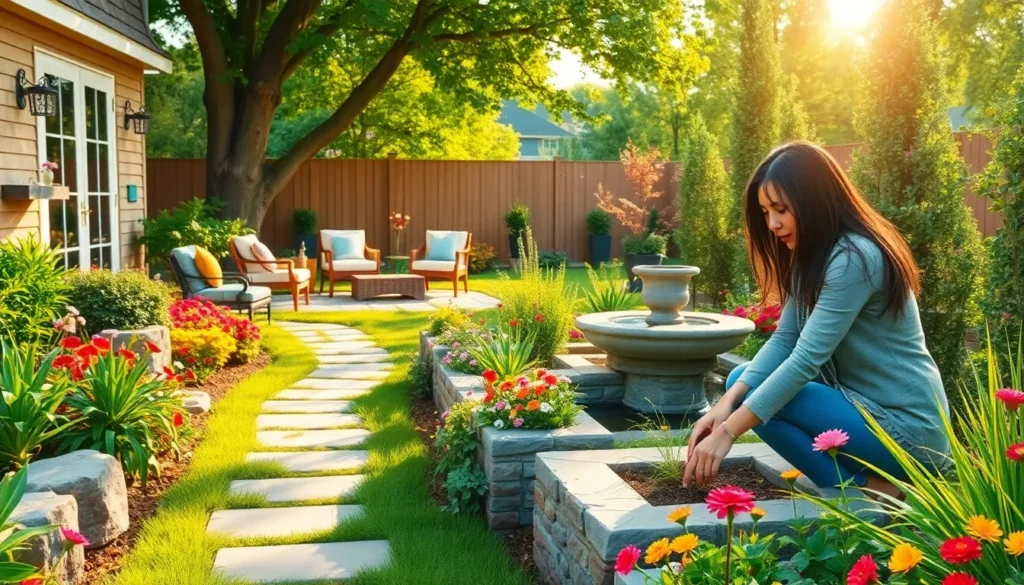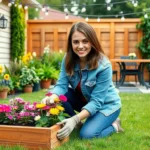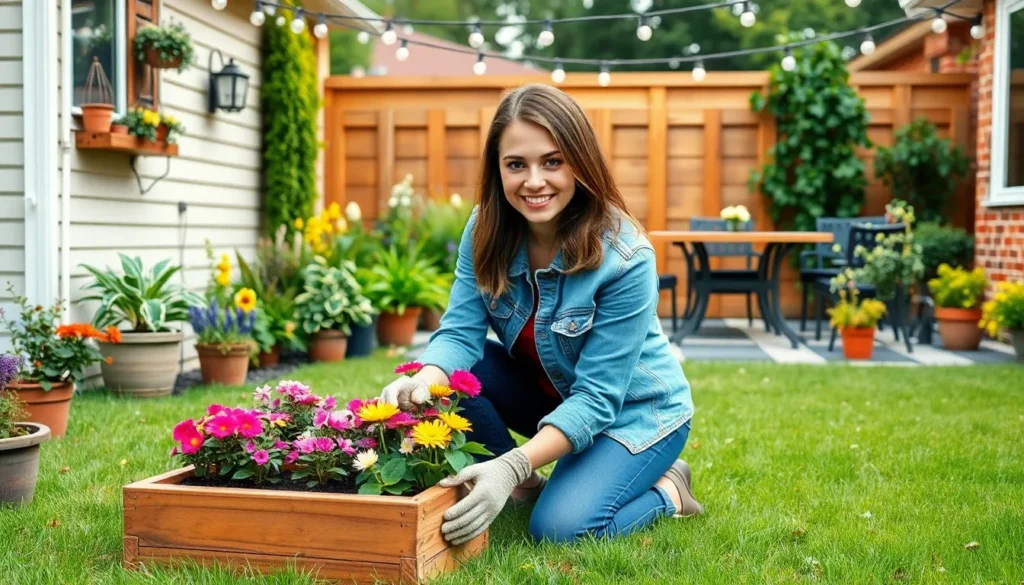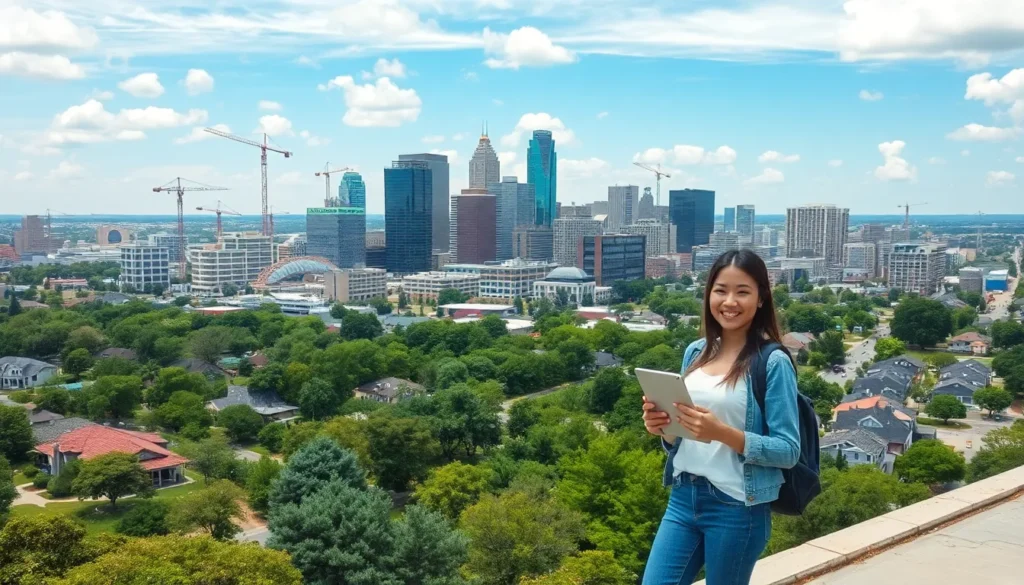Transforming a yard into a stunning landscape is like giving your home a fabulous new outfit. With the right ideas, it can go from drab to fab faster than you can say “curb appeal.” Whether it’s a cozy garden nook or a vibrant flower bed, the possibilities are endless.
Table of Contents
ToggleCreative Home Landscaping Ideas
Incorporating native plants enhances sustainability and reduces maintenance. Native species attract local wildlife and adapt to the climate, providing a natural habitat. For example, choosing wildflowers like coneflowers or black-eyed Susans adds vibrant color while supporting pollinators.
Designing pathways with unique materials adds visual interest and directs foot traffic. Consider using stones, gravel, or reclaimed wood to create a distinctive look. Pathways lead to various outdoor features, enhancing exploration throughout the yard.
Creating vertical gardens utilizes limited space and adds lush greenery. Vertical planters can be hung on walls or fences, showcasing herbs or colorful flowers. This approach maximizes space while enhancing aesthetic appeal.
Incorporating water features introduces tranquility and attracts wildlife. Small ponds, fountains, or cascading waterfalls create a refreshing atmosphere. The soothing sound of water enhances relaxation, making outdoor spaces more inviting.
Building raised garden beds improves accessibility and controls soil conditions. These elevated structures allow for easier planting, weeding, and harvesting. They also provide a defined space for growing vegetables or flowers, ideal for small yards.
Establishing cozy outdoor seating areas encourages socializing and relaxation. Comfortable benches, hammocks, or patio sets create inviting spots for gatherings. Adding outdoor rugs and cushions enhances comfort while defining the area.
Utilizing lighting extends the usability of outdoor spaces at night. Solar lights along pathways or string lights overhead create a warm ambiance. Proper illumination highlights landscaping features, enhancing safety and aesthetics after dark.
Incorporating these creative landscaping ideas transforms an ordinary yard into a vibrant oasis. Each element contributes to a cohesive and inviting outdoor environment.
Choosing the Right Plants
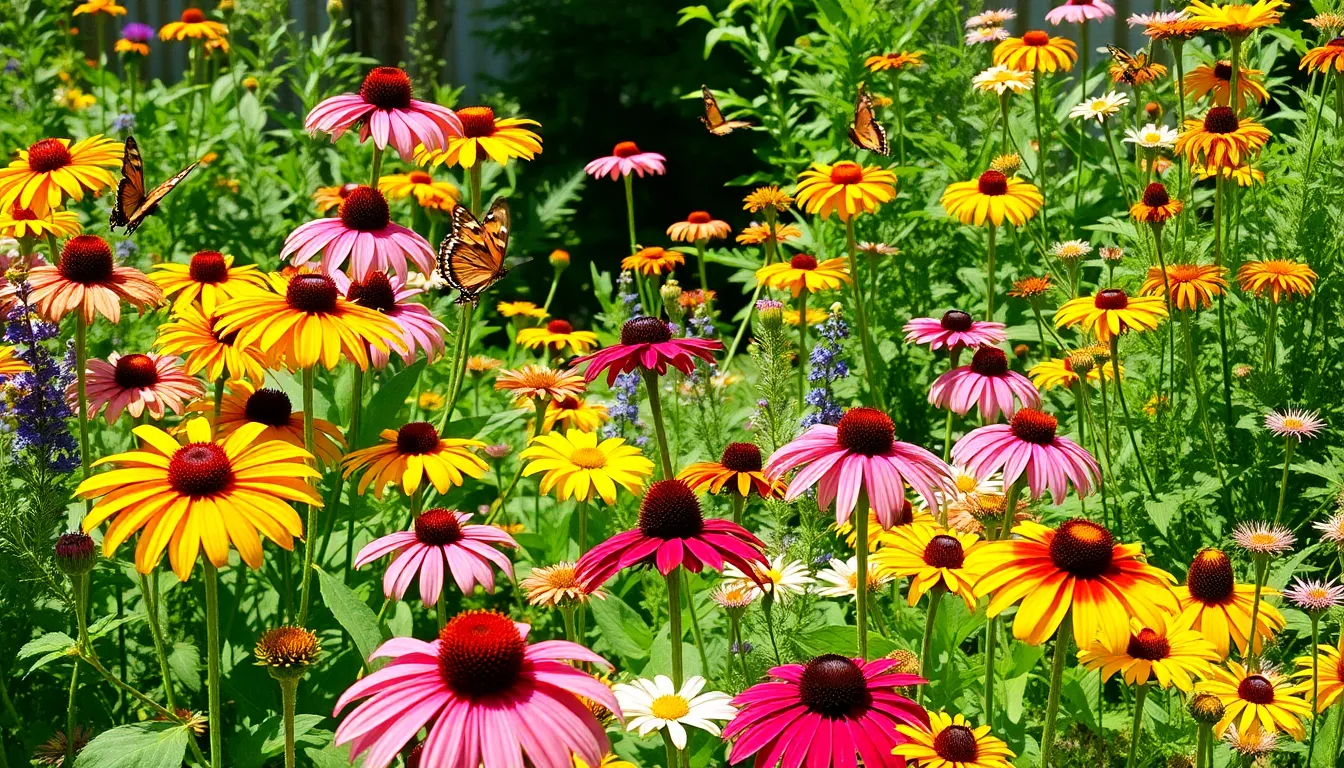
Selecting the right plants significantly impacts a landscape’s success and aesthetics. Consider factors like climate, soil type, and local wildlife when making choices.
Native Plants for Your Area
Native plants thrive in local conditions, requiring less water and maintenance. These plants support regional ecosystems, attracting pollinators like bees and butterflies. Examples include coneflowers, black-eyed Susans, and butterfly weeds. Integrating native plants fosters biodiversity, enhances the landscape’s sustainability, and provides natural habitat for local wildlife. Choosing them promotes soil health and reduces the need for chemical fertilizers, creating a more balanced outdoor space. By planting native species, homeowners contribute positively to the environment while establishing beautiful gardens.
Seasonal Planting Strategies
Seasonal planting broadens opportunities for creativity and variety in landscaping. Spring blooms, such as tulips and daffodils, bring vibrant color to gardens, while summer plants like sunflowers and zinnias create lush displays. Incorporating fall favorites, including asters and chrysanthemums, extends the visual appeal into autumn. During winter, consider evergreen plants for year-round greenery. Rotating plants seasonally aids in pest control and soil health by disrupting cycles. By planning plant placement according to seasonal growth patterns, homeowners can ensure continuous blooms and maintain a dynamic landscape year-round.
Hardscaping Options
Hardscaping plays a crucial role in creating a functional and visually appealing outdoor space. It includes non-plant elements that enhance the landscape while providing structure and durability.
Patios and Walkways
Patios serve as excellent gathering spots. They offer a space for outdoor furniture, barbecues, and entertaining. Popular materials like concrete, pavers, and stone create durable surfaces. Walkways guide guests through the yard, connecting different areas while enhancing usability. Selecting materials that match the home’s style helps create a cohesive look. For instance, using natural stone adds an organic feel, while brick paths offer a timeless charm. Incorporating curves in walkways enhances the visual appeal and draws the eye through the landscape.
Retaining Walls and Edging
Retaining walls provide functional support for sloped landscapes. These structures help manage soil erosion while creating flat surfaces for gardening or lounging. Using materials like concrete blocks, natural stone, or timber allows for diverse design options. Edging enhances flower beds and garden areas, helping to define spaces clearly. Options include metal, brick, and natural stone, each providing distinct aesthetics. Well-designed edging prevents grass and weeds from encroaching, ensuring clean lines and low maintenance. Strategically placing these elements enhances overall landscape appeal while serving practical purposes.
Enhancing Curb Appeal
Enhancing curb appeal significantly increases property value and creates a welcoming atmosphere. Thoughtful landscaping choices can transform the front yard into a standout space that invites admiration.
Front Yard Landscaping Ideas
Creating an inviting front yard often starts with strategically placed flowering plants that add color and warmth. Opt for native species, which thrive in local conditions and require less maintenance. Incorporating decorative mulch around flower beds minimizes weeds and retains moisture. Additionally, walkways made from stone or pavers provide structure and lead visitors through the garden. A well-placed tree offers shade, while a neatly trimmed hedge creates privacy and defines boundaries.
Garden Lighting Solutions
Garden lighting enhances not only beauty but safety as well. Installing pathway lights directs guests safely through the yard while highlighting landscaping features. Spotlights can draw attention to focal points, like ornamental trees or sculptures. Solar-powered options are eco-friendly and easy to install. Consider placing soft uplighting around seating areas to create a cozy ambiance. Illuminating plants with subtle lighting showcases their textures at night, adding depth to garden aesthetics.
Sustainable Landscaping Practices
Sustainable landscaping practices focus on environmental health and resource conservation. These methods not only enhance visual appeal but also support biodiversity and reduce water usage.
Xeriscaping Techniques
Xeriscaping techniques promote water-efficient landscape designs. This practice incorporates drought-tolerant plants that thrive in low-water conditions, resulting in beautiful green spaces with minimal irrigation. Selecting native species helps gardeners create resilient landscapes suited to local climates. Implementing mulch reduces evaporation from soil and suppresses weeds, ensuring healthy plants thrive. Additionally, grouping plants with similar water requirements simplifies irrigation processes. Many homeowners find that xeriscaping significantly lowers water bills while enhancing the beauty of their yards.
Composting and Soil Health
Composting plays a crucial role in maintaining soil health. This practice transforms kitchen scraps and yard waste into nutrient-rich organic matter. Regularly adding compost improves soil structure, boosting its ability to retain moisture and nutrients. It promotes the growth of beneficial microorganisms necessary for plant health. Instead of using chemical fertilizers, utilizing compost supports sustainable practices while enriching the garden’s ecosystem. Incorporating compost into planting beds enhances overall productivity and vitality, helping plants flourish throughout the growing season.
Transforming a yard into a stunning landscape is a rewarding endeavor. With thoughtful planning and creativity, homeowners can create outdoor spaces that reflect their style and enhance their property’s value. By incorporating diverse plants, unique hardscaping elements, and sustainable practices, it’s possible to achieve a vibrant and functional landscape.
Whether it’s a cozy nook for relaxation or a vibrant flower bed that attracts pollinators, each element contributes to the overall beauty and usability of the space. Embracing these home landscaping ideas not only elevates curb appeal but also fosters a connection with nature, creating a sanctuary that can be enjoyed year-round.

